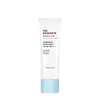What's inside
What's inside
 Key Ingredients
Key Ingredients

 Benefits
Benefits

 Concerns
Concerns

 Ingredients Side-by-side
Ingredients Side-by-side

Water
Skin ConditioningEthylhexyl Methoxycinnamate
UV AbsorberDimethicone
EmollientPhenylbenzimidazole Sulfonic Acid
UV AbsorberGlyceryl Stearate
EmollientSqualane
EmollientPEG-100 Stearate
Potassium Cetyl Phosphate
EmulsifyingCoco-Caprylate/Caprate
EmollientCetearyl Alcohol
EmollientHydroxyacetophenone
AntioxidantSodium Hydroxide
BufferingCarbomer
Emulsion StabilisingGlycerin
HumectantUrea
BufferingPancratium Maritimum Extract
BleachingTriacontanyl Pvp
HumectantCetearyl Olivate
Sorbitan Olivate
EmulsifyingScutellaria Baicalensis Extract
AntimicrobialDimethicone/Vinyl Dimethicone Crosspolymer
Skin ConditioningPolymethylsilsesquioxane
BHT
AntioxidantWater, Ethylhexyl Methoxycinnamate, Dimethicone, Phenylbenzimidazole Sulfonic Acid, Glyceryl Stearate, Squalane, PEG-100 Stearate, Potassium Cetyl Phosphate, Coco-Caprylate/Caprate, Cetearyl Alcohol, Hydroxyacetophenone, Sodium Hydroxide, Carbomer, Glycerin, Urea, Pancratium Maritimum Extract, Triacontanyl Pvp, Cetearyl Olivate, Sorbitan Olivate, Scutellaria Baicalensis Extract, Dimethicone/Vinyl Dimethicone Crosspolymer, Polymethylsilsesquioxane, BHT
Water
Skin ConditioningEthylhexyl Methoxycinnamate
UV AbsorberOctocrylene
UV AbsorberEthylhexyl Salicylate
UV AbsorberIsododecane
EmollientSilica
AbrasiveGlycerin
HumectantPropylene Glycol
HumectantPentylene Glycol
Skin ConditioningBis-Ethylhexyloxyphenol Methoxyphenyl Triazine
Skin ConditioningCetyl Alcohol
EmollientPhenoxyethanol
PreservativePolymethylsilsesquioxane
Niacinamide
SmoothingPolysorbate 80
EmulsifyingPanthenol
Skin ConditioningTremella Fuciformis Polysaccharide
Emulsion StabilisingEthylhexylglycerin
Skin ConditioningDisodium EDTA
Zinc Oxide
Cosmetic ColorantSodium Hyaluronate
HumectantButylene Glycol
Humectant3-O-Ethyl Ascorbic Acid
Skin ConditioningCaprylic/Capric Triglyceride
MaskingAvena Sativa Straw Extract
Skin ConditioningArtemisia Argyi Leaf Extract
Skin ConditioningHydrogenated Lecithin
EmulsifyingBehenyl Alcohol
EmollientOctyldodecanol
EmollientHydroxyacetophenone
AntioxidantCeramide NP
Skin ConditioningCeramide AP
Skin ConditioningCeramide Ns
Skin ConditioningCeramide Ng
Skin ConditioningHyaluronic Acid
HumectantRetinol
Skin ConditioningWater, Ethylhexyl Methoxycinnamate, Octocrylene, Ethylhexyl Salicylate, Isododecane, Silica, Glycerin, Propylene Glycol, Pentylene Glycol, Bis-Ethylhexyloxyphenol Methoxyphenyl Triazine, Cetyl Alcohol, Phenoxyethanol, Polymethylsilsesquioxane, Niacinamide, Polysorbate 80, Panthenol, Tremella Fuciformis Polysaccharide, Ethylhexylglycerin, Disodium EDTA, Zinc Oxide, Sodium Hyaluronate, Butylene Glycol, 3-O-Ethyl Ascorbic Acid, Caprylic/Capric Triglyceride, Avena Sativa Straw Extract, Artemisia Argyi Leaf Extract, Hydrogenated Lecithin, Behenyl Alcohol, Octyldodecanol, Hydroxyacetophenone, Ceramide NP, Ceramide AP, Ceramide Ns, Ceramide Ng, Hyaluronic Acid, Retinol
 Reviews
Reviews

Ingredients Explained
These ingredients are found in both products.
Ingredients higher up in an ingredient list are typically present in a larger amount.
Ethylhexyl Methoxycinnamate is an organic compound that provides UVB protection. It often goes by the more common name of octinoxate. It is created from methoxycinnamic acid and 2-ethylhexanol.
Ethylhexyl Methoxycinnamate absorbs UVB rays with wavelengths between 280-320 nm. UV absorbers protect your skin by using chemical reactions to convert UV rays into heat and energy.
UVB (290-320 nm) rays emit more energy than UVA rays. They are capable of damaging DNA, causing sunburns and are thought to be linked to skin cancer.
The state of Hawaii has banned sunscreens containing octinoxate due to its potential impact on coral reefs. More research is needed to bridge gaps in this research. The European Union allows higher levels of octinoxate in sunscreens than the US and Australia.
Ethylhexyl Methoxycinnamate is oil soluble. It is not stable and may lose efficacy when exposed to sunlight.
Learn more about Ethylhexyl MethoxycinnamateGlycerin is already naturally found in your skin. It helps moisturize and protect your skin.
A study from 2016 found glycerin to be more effective as a humectant than AHAs and hyaluronic acid.
As a humectant, it helps the skin stay hydrated by pulling moisture to your skin. The low molecular weight of glycerin allows it to pull moisture into the deeper layers of your skin.
Hydrated skin improves your skin barrier; Your skin barrier helps protect against irritants and bacteria.
Glycerin has also been found to have antimicrobial and antiviral properties. Due to these properties, glycerin is often used in wound and burn treatments.
In cosmetics, glycerin is usually derived from plants such as soybean or palm. However, it can also be sourced from animals, such as tallow or animal fat.
This ingredient is organic, colorless, odorless, and non-toxic.
Glycerin is the name for this ingredient in American English. British English uses Glycerol/Glycerine.
Learn more about GlycerinHydroxyacetophenone is antioxidant with skin conditioning and soothing properties. It also boosts the efficiency of preservatives.
This ingredient is not irritating or sensitizing.
Polymethylsilsesquioxane is a silicone used as a film forming agent.
When applied to the skin, this ingredient creates an invisible film on the surface. This film still allows oxygen to pass through, but prevents moisture from escaping. This can help condition and hydrate the skin. It also leaves a silky feel when applied.
Polymethylsilsesquioxane has not been shown to clog pores. It has been deemed safe to use up to 55%, but most cosmetics use much less.
If you have concerns about using this ingredient, we recommend speaking with a professional.
Learn more about PolymethylsilsesquioxaneWater. It's the most common cosmetic ingredient of all. You'll usually see it at the top of ingredient lists, meaning that it makes up the largest part of the product.
So why is it so popular? Water most often acts as a solvent - this means that it helps dissolve other ingredients into the formulation.
You'll also recognize water as that liquid we all need to stay alive. If you see this, drink a glass of water. Stay hydrated!
Learn more about Water